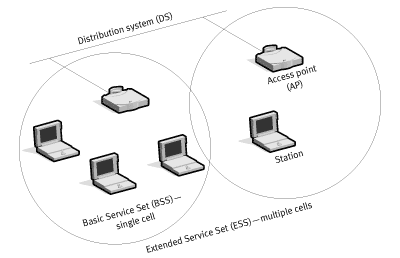LTE筆記: R14定位更新 (1) ~ 總論
在之前的文章中, 我們討論了在LTE下的定位技術,
當時, 仍停留在技術的討論, 尚未修改spec,
隨著時間的經過, 3gpp也對LTE的定位做出更多改變,
正好看到一篇文章討論最近LTE架構下的定位技術演進:
https://www.ericsson.com/research-blog/lte/indoor-positioning-enhancements-in-lte-standardization/
接下來應該會花一些篇幅翻譯這篇文章,
並補充一些相關的了解.
3GPP release 13 enhancements
The Release 13 work item introduced the device reporting of Bluetooth/WiFi identifiers and uncompensated barometric pressure. These reports are used for positioning via correlation with data in a National Emergency Address Database (NEAD), only supporting emergency call positioning. In addition, the work item introduced support for a dedicated positioning layer with Terrestrial Beacon Systems (TBS) based on the Metropolitan Beacon System. It can be seen as a terrestrial bound Global Navigation Satellite System (GNSS).
在Release 13中, LTE加入了一些更多用以定位的資訊, 包括:
WiFi和Bluetooth的ID, 氣壓計 (用以定位高度) , 等...
這些資訊來自於手機裝置, 可以用來輔助LTE定位,
同時, 也和National Emergency Address Database (NEAD)結合,
NEAD應該是美國消防救護單位的資料庫, 可以幫助緊急的定位需求,
比較有趣的是加入對Terrestrial Beacon Systems (TBS) 的支援,
TBS是一套類似於GNSS (GPS) 的定位系統,
相同的, 兩者都是基於三角定位技術, 以及遠方同步的訊號源,
然而, GNSS的訊號來自於衛星, TBS則是在城市中高處架設的訊號源,
考慮到城市中複雜的通道環境, TBS可以增加參考點, 改進定位精確度,
3GPP release 14 enhancements
The Release 14 work item was mainly dedicated to enhancements for Observed Time Difference of Arrival (OTDOA). The following enhancements were specified:
在Release 14中, 主要在於改善OTDOA的功能, 主要有以下5點改進:
當時, 仍停留在技術的討論, 尚未修改spec,
隨著時間的經過, 3gpp也對LTE的定位做出更多改變,
正好看到一篇文章討論最近LTE架構下的定位技術演進:
https://www.ericsson.com/research-blog/lte/indoor-positioning-enhancements-in-lte-standardization/
接下來應該會花一些篇幅翻譯這篇文章,
並補充一些相關的了解.
原本文章來自: Ericsson Research Blog
3GPP release 13 enhancements
The Release 13 work item introduced the device reporting of Bluetooth/WiFi identifiers and uncompensated barometric pressure. These reports are used for positioning via correlation with data in a National Emergency Address Database (NEAD), only supporting emergency call positioning. In addition, the work item introduced support for a dedicated positioning layer with Terrestrial Beacon Systems (TBS) based on the Metropolitan Beacon System. It can be seen as a terrestrial bound Global Navigation Satellite System (GNSS).
在Release 13中, LTE加入了一些更多用以定位的資訊, 包括:
WiFi和Bluetooth的ID, 氣壓計 (用以定位高度) , 等...
這些資訊來自於手機裝置, 可以用來輔助LTE定位,
同時, 也和National Emergency Address Database (NEAD)結合,
NEAD應該是美國消防救護單位的資料庫, 可以幫助緊急的定位需求,
比較有趣的是加入對Terrestrial Beacon Systems (TBS) 的支援,
TBS是一套類似於GNSS (GPS) 的定位系統,
相同的, 兩者都是基於三角定位技術, 以及遠方同步的訊號源,
然而, GNSS的訊號來自於衛星, TBS則是在城市中高處架設的訊號源,
考慮到城市中複雜的通道環境, TBS可以增加參考點, 改進定位精確度,
3GPP release 14 enhancements
The Release 14 work item was mainly dedicated to enhancements for Observed Time Difference of Arrival (OTDOA). The following enhancements were specified:
- Solutions to enable separation of positioning signals from different transmission points configured as a combined cell
- Improved measurement report resolution
- Reporting of received additional paths of positioning reference signals
- Terrestrial Beacon Systems based on LTE positioning reference signals
- The time of arrival estimation based on the combination of different reference signals
在Release 14中, 主要在於改善OTDOA的功能, 主要有以下5點改進:
- 允許接收來自於不同傳送端 (eNB) 的定位訊號
- 增進量測報告的精確度
- 回報額外的PRS路徑 (用以對抗multipath的效應)
- 利用PRS訊號作為TBS定位的訊號源
- 利用來自於多個傳送端 (eNB) 的定位訊號計算ToA
作為此文章的小結,
在Release 13中, 主要加入異質網路 (WiFi, Bluetooth, TBS) 的定位資訊,
甚至也包含了手機上的sensor資訊,
藉由這些資訊, LTE系統可以開發出更精確的定位結果,
在Release 14中, 主要是對原有的OTDOA進行修改,
我們可以發現, 原本由手機端發起量測, 傳到網路端定位的架構,
可能會更改成, 類似於GNSS, 由手機端發起量測, 也在手機端進行定位的架構,
對於室內定位遇到的multipath的效應, 在Release 14中也增加了額外欄位處理,
我可能還要去確認一下PRS的修改與量測資料流,
按照目前這篇文章的說明, 應該可以同時量測多個eNB的PRS訊號,
計算ToA, 並直接執行像是GNSS一樣的三角定位方法,
如果真是如此, 在pico cell的室內布建環境中, 應該可以有良好的定位結果,




留言
張貼留言